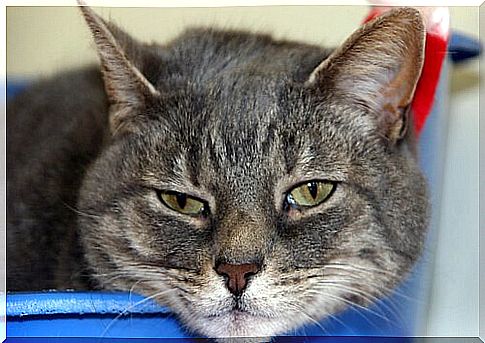Diabetes Treatment In Dogs And Cats

Diabetes in dogs and cats can develop asymptomatically, affecting the body silently. Today, we are going to summarize the main aspects of preventing and treating this chronic disease in your pet.
Diabetes in dogs and cats: what it is and how it develops
In humans and animals, the diabetes mellitus may present in different ways. The type 1 diabetes happens when the body is unable to produce insulin directly. The Type 2 is characterized by a metabolic disorder that leads to misuse of the insulin produced, or also a deficit in production.
the body loses control
In these cases, the body becomes unable to control its own blood glucose (blood sugar level). As a result, a huge amount of glucose fails to generate energy and becomes “stuck”.
When all the glucose doesn’t reach the bloodstream, the animal goes into a kind of “starvation state”. So, the person usually eats a lot and gains weight quickly. What appears to be endless hunger may actually be a symptom of diabetes.
Diabetes in dogs and cats: risk factors
Type 1 diabetes is related, in almost 100% of cases, to genetic inheritance. Type 2 in dogs and cats has important risk factors associated with:
- Sedentary lifestyle
- overweight
- Unbalanced feeding
- Genetic inheritance
Diabetes in Dogs: Prevention and Treatment
Most dogs that suffer from diabetes develop type 1. In these cases, it is almost impossible to talk about prevention. These animals should undergo daily injections throughout their lives as a treatment for a chronic disease.

The dog breeds that show more genetic tendency to this disease are:
- french poodle
- beagle
- Teckel (sausage)
- Golden retriever
- Miniature Schnauzer
Some dogs can develop type 2 diabetes because they have more than one of the risk factors mentioned above.
In these cases, prevention is key to preserving the animal’s health and well-being. Simple habits, such as providing them with balanced nutrition and regular exercise, are very effective in fighting the disease.
The treatment is very similar to type 1 and consists of applying insulin. But positive changes in the animal’s routine can lead to a decrease in the daily dose. Not to mention that it improves the quality of life and increases the animal’s longevity.
Diabetes in Cats: Prevention is Key
In the case of felines, type 2 diabetes is most often diagnosed. In general, these animals develop this metabolic disorder due to bad habits acquired in life at home.
Many apartment-dwelling cats experience a severe decrease in their daily activity. This lack of exercise makes them more vulnerable to risk factors such as obesity and sedentary lifestyle. As a result, they can develop not only diabetes or hypertension, but also conduct disorders and depression.

Domestic cats often experience a radical change in their diet. Freed, they would hunt for their own food and their diet would be based primarily on meat proteins.
But at home, cats often eat rations with a high percentage of carbohydrates. The ideal is to offer the animal a diet rich in proteins and encourage it to have a more active routine. Toys and socializing are great ways to motivate your best friend.
Diabetes in cats: treatment
Treatment is very similar to dogs. It’s based on giving insulin shots, but cats have a big advantage over dogs.
With small changes in diet and lifestyle, the animal can reverse its metabolic rate. In many cases, the injections can be stopped and the animal can fully recover its quality of life.
Diabetes in dogs and cats can be easily prevented by including healthy habits in our best friend’s routine. It is worth reaffirming the importance of preventive medicine for animals and periodic visits to the veterinarian.









